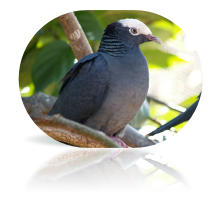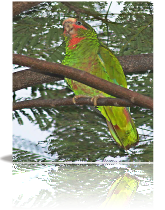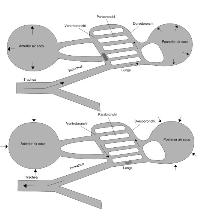
Drinking Behavior
There are four general ways in which birds drink.
Most birds are unable to swallow by the "sucking" or "pumping" action of peristalsis in their esophagus (as humans do), and drink by repeatedly raising their heads after filling their mouths to allow the liquid to flow by gravity, a method usually described as "sipping" or "tipping up". The notable exception is the Columbiformes; in fact, according to Konrad Lorenz in 1939,
Although this general rule still stands, since that time, observations have been made of a few exceptions in both directions., In addition, specialized nectar feeders like sunbirds (Nectariniidae) and hummingbirds (Trochilidae) drink by using protrusible grooved or trough-like tongues, and parrots (Psittacidae) lap up water. Many seabirds have glands near the eyes that allow them to drink seawater. Excess salt is eliminated from the nostrils. Many desert birds get the water that they need entirely from their food. The elimination of nitrogenous wastes as uric acid reduces the physiological demand for water. Circulatory System Birds have a four-chambered heart, in common with humans, most mammals, and some reptiles (namely the crocodilia). This adaptation allows for an efficient nutrient and oxygen transport throughout the body, providing birds with energy to fly and maintain high levels of activity. A Ruby-throated Hummingbird's heart beats up to 1200 times per minute (about 20 beats per second).
(Click on image to enlarge)
The information on Bird Anatomy was contributed by: http://en.wikipedia.org/wiki/Bird_anatomy
| ||
|

Grand Caymanian Parrot (Amazona leucocephala caymanensis)

|
Copyright © 2011, Caymannature.com. All rights reserved.

